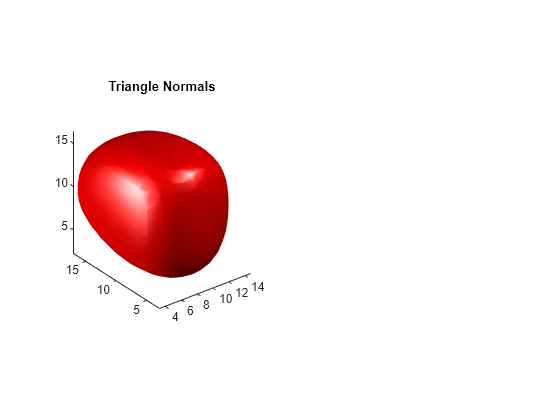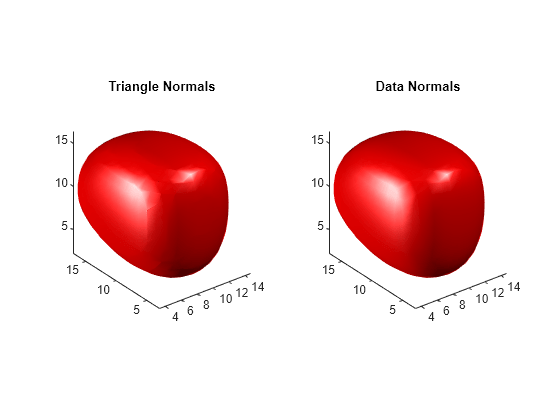isonormals
计算等值面顶点的法向量
语法
n = isonormals(X,Y,Z,V,vertices)
n = isonormals(V,vertices)
n = isonormals(V,p)
n = isonormals(X,Y,Z,V,p)
n = isonormals(...,'negate')
isonormals(V,p)
isonormals(X,Y,Z,V,p)
说明
n = isonormals(X,Y,Z,V,vertices) 使用数据 V 的梯度计算顶点列表 vertices 中等值面顶点的法向量。数组 X、Y 和 Z 定义三维体 V 的坐标。计算的法向量在 n 中返回。
n = isonormals(V,vertices) 假定数组 X、Y 和 Z 定义为 [X,Y,Z] = meshgrid(1:n,1:m,1:p),其中 [m,n,p] = size(V)。
n = isonormals(V,p) 和 n = isonormals(X,Y,Z,V,p) 基于句柄 p 确定的补片的顶点计算法向量。
n = isonormals(...,'negate') 对法向量求反(反转法向量方向)。
isonormals(V,p) 和 isonormals(X,Y,Z,V,p) 将句柄 p 确定的补片的 VertexNormals 属性设置为已计算的法向量,而不是返回值。
示例
扩展功能
版本历史记录
在 R2006a 之前推出
另请参阅
interp3 | isosurface | isocaps | smooth3 | subvolume | reducevolume | reducepatch

